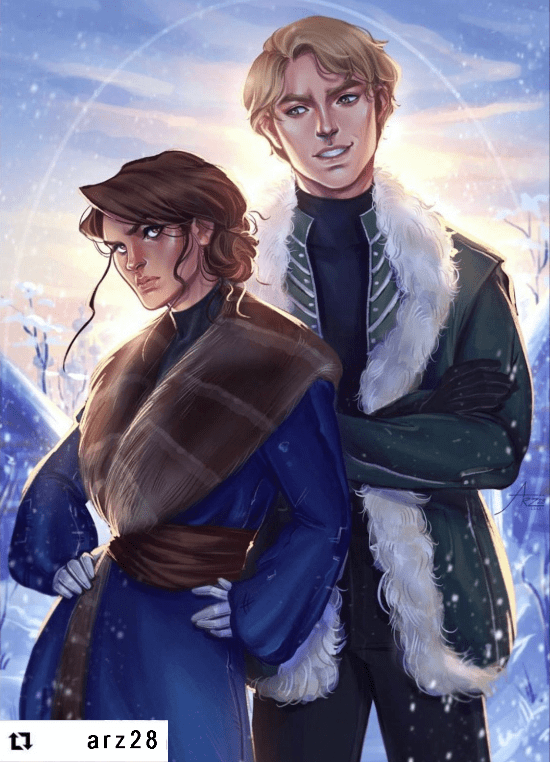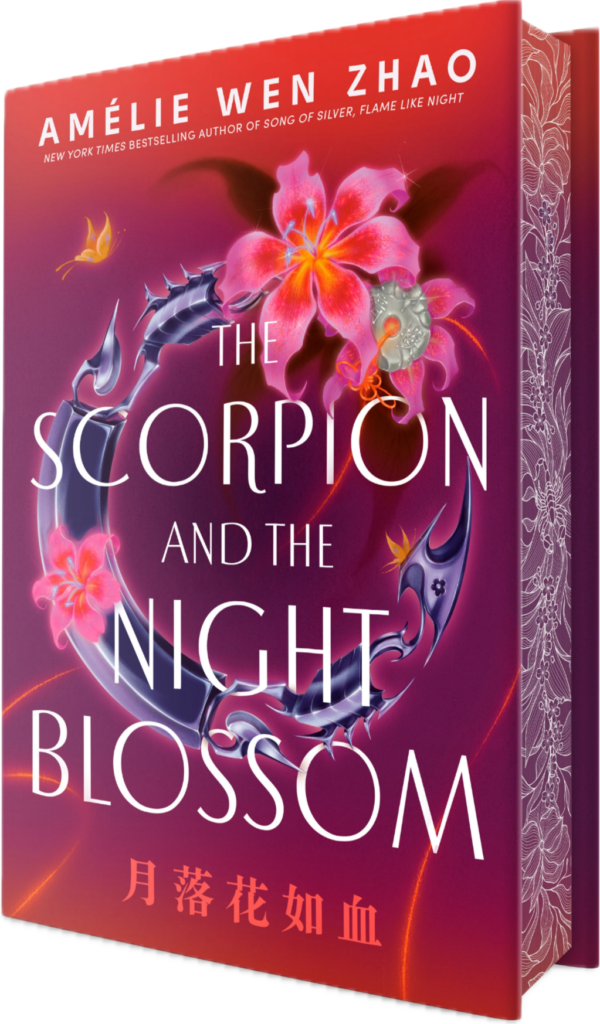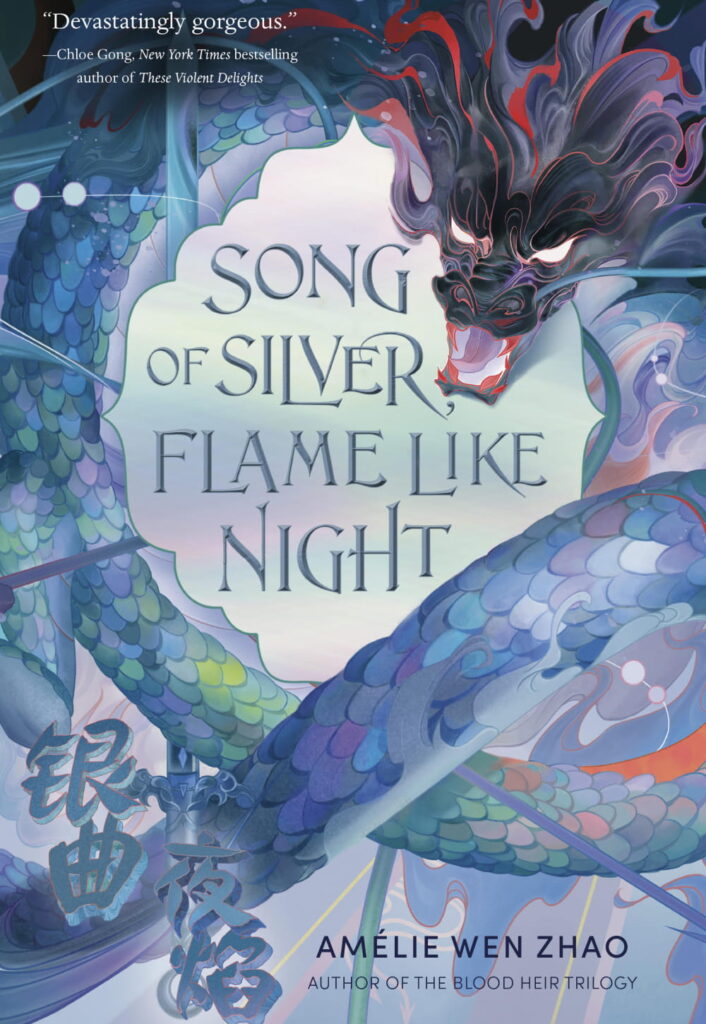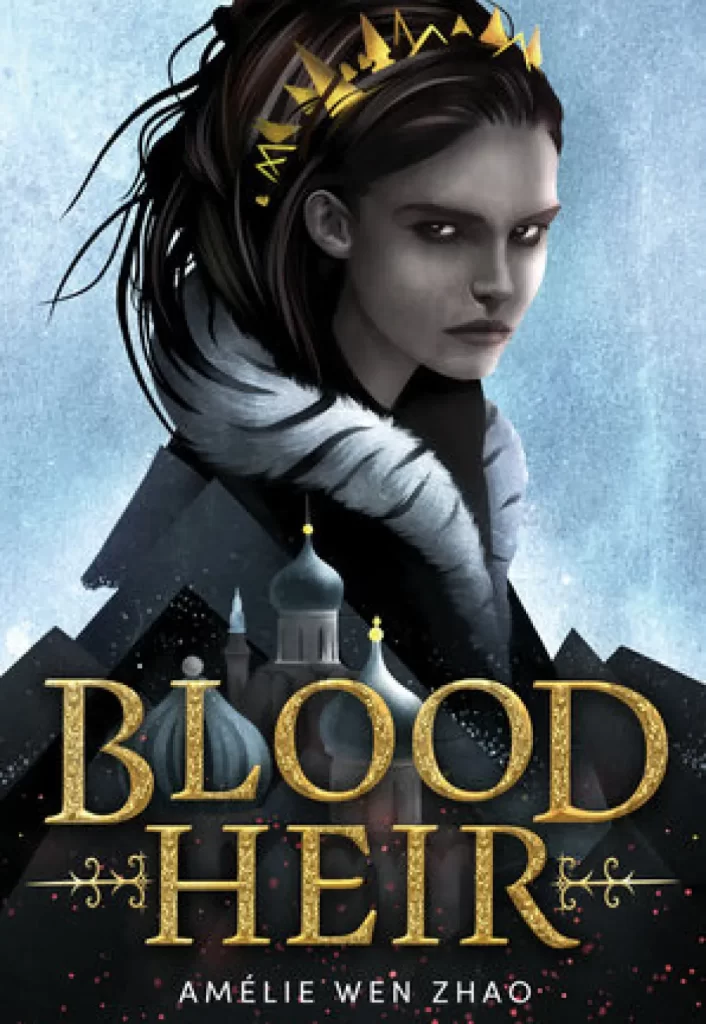Dear Affinite,
Welcome to the world of Blood Heir. Step into the Cyrilian Empire, a glittering land of ice and snow as old as the Deities, rimmed by the Krazyast Mountains to the north and the Aramabi Desert to the south. Ice spirits frolic between the frozen conifers of the Syvern Taiga while ruselkya sing in the depths of the Whitewaves.
This is where the story of Anastacya Mikhailov, the blood heir of Cyrilia, begins.

Meet the Characters



Art












Playlist
How Blood Heir Began: Character & Story Inspirations
I began writing BLOOD HEIR in 2014, when my family and I took a trip together to Russia. Given my international upbringing, I’ve always had a love for world history, and I remember taking a trip to the Winter Museum in St. Petersburg and staring at the portraits of Nicholas II Alexandrovich Romanov and his daughters and feeling fascinated. I grew up loving the animated movie ANASTASIA, yet I knew the story of the Grand Duchess Anastasia Nikolaevna had ended quite differently.
This led me to begin asking questions: what if Anastasia had somehow survived? What if she wasn’t your typical beautiful, graceful princess, but instead a monster reviled by society? And what if I created a story exploring the downfall of Russia’s monarchy and the dark sides of an imperial dynasty?
It was also around this time that I met my now-fiancé, and learned of his family history. His ancestors had been brought from Southern China to Canada as coolies, and (we assume) worked on the Canadian Pacific Railway under indentured labor. This led me to research the depths and continuing ramifications of human trafficking, something which I realized was oft-overlooked and had never been explored in young adult literature — and is still one of the largest illicit global industries to this day. I wanted to critique the way this industry thrives in the cracks between the laws, and how it preys on the weak and the vulnerable. And I wanted to show the rampant complicity that our society plays in facilitating this — whether we are simply unaware, or whether we choose to turn away when confronted with these issues.
With these in mind, I began writing a dark and gritty turn on a fairytale-turned-tragedy.
Dust & Stars: The Real-Life Tragedies Behind May and Linn
A lot of readers have resonated with May or Linn, and I can tell you that they are the two characters closest to my heart in this series. When I began reading and wanting to write YA fantasy, I hadn’t seen many characters who looked, spoke, and acted like me in books. I tell this story a lot, but Linn almost didn’t exist until I slipped her into the book in a last rewrite out of an intrinsic desire to see myself in these stories — not as the stereotypical nerdy Asian character or the quiet Asian sidekick, but as a nuanced, multifaceted character worthy of protagonist status. As someone who would fight back.
As you will — or may already have — read, May and Linn come with tragic backstories: both victims of human trafficking sold into indentured labor in a foreign country. Human trafficking and modern-day slavery are a key social issues I wished to examine and critique in BLOOD HEIR — and ones that I rarely see explored in either popular western literature or global media. According to the International Labor Organization, an estimated 20-40 million people worldwide are trapped in modern-day slavery and indentured labor — the true number is difficult to measure since this practice operates under the radar of laws. Russia is one of the top countries for human trafficking — as is my own home country, China.
Human trafficking and indentured labor rely on global complicity to thrive — the ILO estimates $150bn of revenues derived from this industry. The reason this practice is so difficult to catch and garners so little attention is because both law enforcement and multinational corporations profit from it: it is common practice for traffickers to bribe police officers to look away, and multinational corporations often rely on forced labor in their supply chain to lower costs and maximize profits.
The majority of victims of human trafficking are lured by the promise of economic opportunity; there is often a “broker” who promises a paid job in another country. When the victims reach the foreign country, the traffickers take away their choices by:
– coercing the victims into signing work contracts that they can never earn out;
– removing their personal identification, travel documents, and means of leaving;
– demanding them to pay back “debt” accumulated throughout their contract;
– threatening them with violence should they misbehave.
If you read BLOOD HEIR, you’ll notice most of these signs scattered throughout as Ana, May, and Ramson travel across Cyrilia. My hope is that, by writing these characters, you’ll grow to love them enough to learn about the very real-life tragedies that exist behind their backstories.
To learn more about human trafficking and modern-day slavery:
– United Nations Office on Drug and Crimes
– Polaris Project
– Love 146
– Stop The Traffik
– Freedom Network USA



